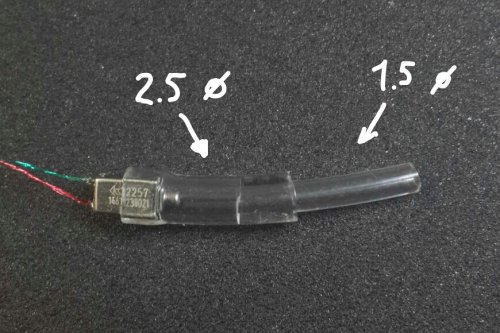Well one more issue i have to have a point on....
inverting the polarity may fix issues here and there, but is a bad practice
Not pointing out anyone, i myself do that on multi driver setup, which are hard to tweak
because, inverting polarity
1.may change the air load from front of driver(The BA ceiling) to inside of the BA(where voice coil resides) which can create more distortion as it move back as the air behind the driver has moved to in front of driver.
exception:
only do with small driver like SWFK but also 2dB attenuation circuit(smaller drivers are less prone) and never do with vented driver as it can make your driver sound like the sound coming from vent
2. Imaging occurs when a pair BA successfully "projects" an audible representation of the instruments in focus front of us as they are compression driver by nature(exception are top nozzle format, i forgot the nomenclature used by Audio company like Knowles). When a BA is wired invertly, the information becomes out of focus, and sonically disorganized. This is especially true since the other drivers in the IEM are affected. Mid-range frequencies are present in the bass and tweeter drivers. Reversed wiring causes dynamic stereo information to "collapse," making the music lose much of its impact.
exception:
@piotrus-g Dual CI and TWFK 2nd iteration and its children so far(replaced my low pass 72Hz CI with HODVTEC with vent open). There, inverting polarity was eminent as the Bass dB was so high and mid range would have been destroyed(bass Bleed thick). He actually reversed TWFK so reduced output from the TWFK woofer with reverse phase cancel some high dB bass bleed but also with crossover. and then he extremely high passed the tweeter of TWFK so, it sounds infocus rather than diffused.
3. High frequencies lose their focus when a BA is inverted. This results in an "airy" treble that causes the sound stage to sound larger (yet less defined). Although some desire this, it is inaccurate in the strictest sense. That is what a pseudo air is. The ceiling or top part of BA, becomes a spring which we never calculated, which is tighter, making BA throw focus inside the chamber and then relax like vented speaker, which comes out diffused and location less. that is, well what i call is lingering noisy air. Accurate air is recording Hiss.
Advantage and Disadvantage point
4. Cancellation: undesired cancellation is bad, and i mean very bad. Desired Cancellation can lead to good result.
Sealed driver is still okay with reverse polarity, but vented driver, if not tuned properly, can sound like hollow cup. So before reverting phase in multi driver, ask and confirm or simulate the design. or try and test with ear and dont see Freq graphs. You shouldn't feel weird imaging or feel that driver is forcing to keep up(yes, human ear can sense the movement of driver, just focus after designing)
Note :
did with RAF and came with these points





























